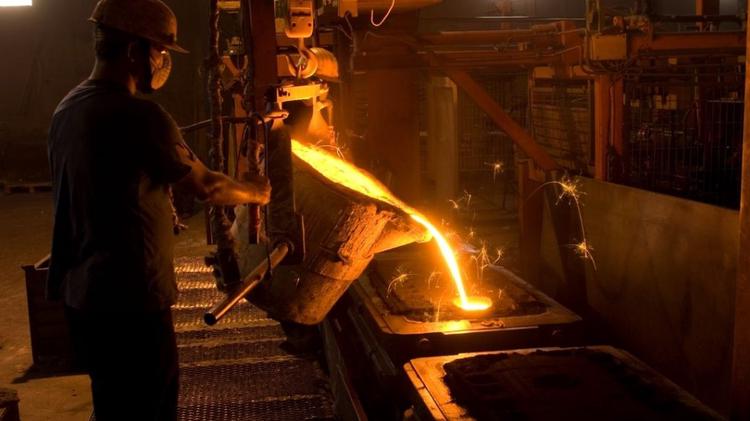
The European Commission has thrown its weight behind RINA’s Hydra project, a ground-breaking initiative aimed at pioneering 100% hydrogen fueled steel production. RINA, a leading multinational engineering consultancy, inspection, and certification company, has announced the launch of this ambitious six-year research project, which promises to revolutionize the international steel industry by offering near-zero carbon technology and capabilities.
European Commission’s Endorsement and Funding for the Hydra Project
The Hydra project is part of a broader effort funded by the European Commission’s NextGenerationEU plan and supported by the Italian Ministry of Enterprises and Made in Italy through RINA’s Centro Sviluppo Materiali (CSM) in Castel Romano, Italy. The initiative, which is part of the IPCEI (Important Projects of Common European Interest), has been allocated funding of €88M and will involve a dedicated team of 120 personnel.
Steel, a versatile and essential material used in countless applications, is produced in over 3,500 different types, each with unique physical, chemical, mechanical, and magnetic properties. However, the steel industry is also a significant contributor to global greenhouse gas emissions, accounting for approximately 8% of total emissions. Currently, every tonne of steel produced emits an average of 1.63 tonnes of CO2.
Utilizing Hydrogen in Steel Production: A Potential Game Changer
The Hydra project challenges these environmental impacts head-on, aiming to reduce emissions to mere kilograms of CO2 per tonne of steel. This initiative represents a critical step towards achieving net-zero emissions in the steel industry, making this world-changing technology accessible to the entire sector.
The Hydra project will entail the design and construction of an operational pilot plant that will utilize hydrogen throughout all stages of the steel production cycle. The plant, due for completion by 2025, will comprise a 30m high direct iron ore reduction (DRI) tower, which will use hydrogen as a reducing agent, an electric furnace (EAF), and a reheating furnace.
Training Center for Hydrogen-based Decarbonization Technologies
Furthermore, the project will establish a testing and qualification hub, which will be responsible for characterizing the materials, equipment, and internal infrastructure required by steel producers to transition to 100% hydrogen fueled steel production. This holistic approach ensures a comprehensive and validated shift to hydrogen-based processes.
RINA, with its extensive experience in hydrogen-based decarbonization technologies — including conducting the world’s first test of a 30% gas-hydrogen blend in steel forging — will also establish a training center under the Hydra project. This center will accumulate and disseminate knowledge related to the design, implementation, and deployment of hydrogen-based decarbonization technologies.
The European Commission’s endorsement of RINA’s Hydra project signals a significant shift in the steel industry towards more sustainable practices. The innovative use of hydrogen in steel production could drastically reduce carbon emissions, bringing the industry one step closer to achieving net-zero emissions. This groundbreaking initiative marks a new chapter in steel production, setting the stage for a more sustainable future.
A Snapshot of the Top Steel-Producing Nations
As we delve into the transformative potential of the Hydra project for the steel industry, it’s important to understand the current landscape of global steel production. Here’s a snapshot of the top four countries in steel production:
China: The Global Leader
China is the undisputed leader in global steel production. In 2019, the country produced over 996 million tonnes of steel, making it the largest steel producer worldwide. However, this massive production comes with an environmental cost. China contributes to over 60% of global steel production emissions, underlining the urgency for greener solutions like the Hydra project.
India: Rapidly Rising
India holds the position of the second-largest steel producer. The country has recently increased its production by 5.3%, reflecting its growing steel industry. Major players in the Indian steel industry include Tata Steel and JSW Steel. The adoption of hydrogen-based decarbonization technologies could significantly mitigate the environmental impact of India’s burgeoning steel production.
Japan: Technological Pioneer
Japan, known for its advanced technology and high-quality products, is the third-largest steel producer. The country exports nearly half of its steel production, demonstrating its significant role in the global steel market. With its technological prowess, Japan could potentially lead the way in adopting and refining hydrogen-fueled steel production.
United States: Import-Dependent Producer
The United States ranks as the fourth-largest steel producer. Major American steel companies include Nucor and U.S. Steel Corporation. Despite its substantial domestic production, the U.S. is one of the largest importers of steel globally. This highlights the potential for the U.S. to benefit from more efficient and sustainable steel production methods, such as those proposed by the Hydra project.
In summary, these top steel-producing nations have a pivotal role to play in the transition towards a greener steel industry. The successful implementation and adoption of projects like Hydra could significantly reduce global carbon emissions from steel production, paving the way for a more sustainable future.